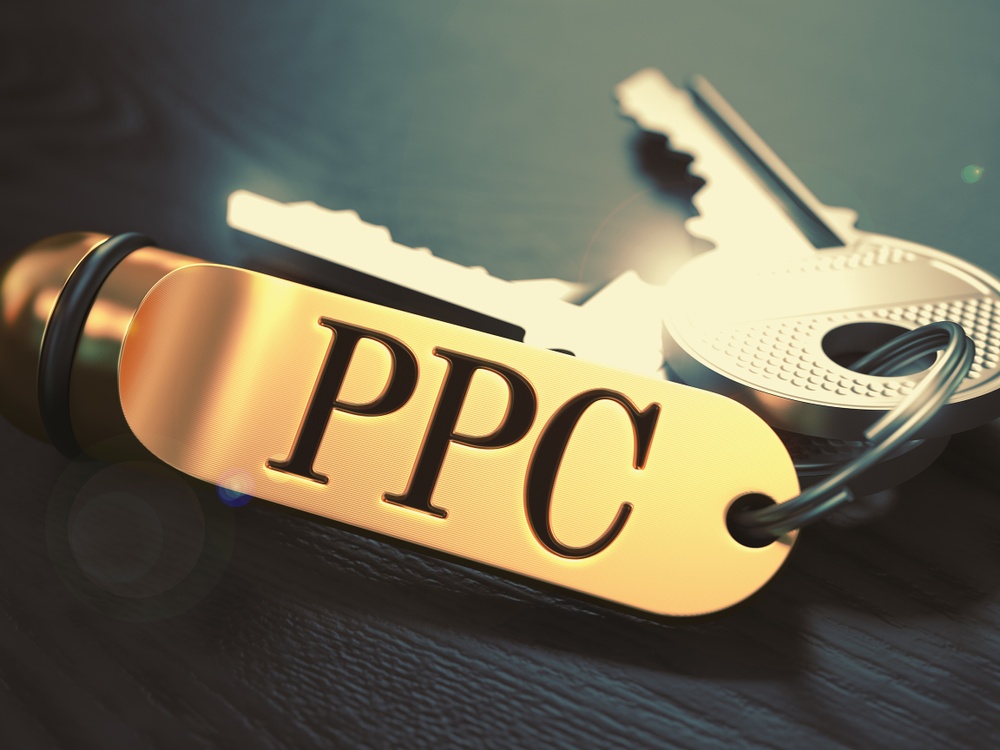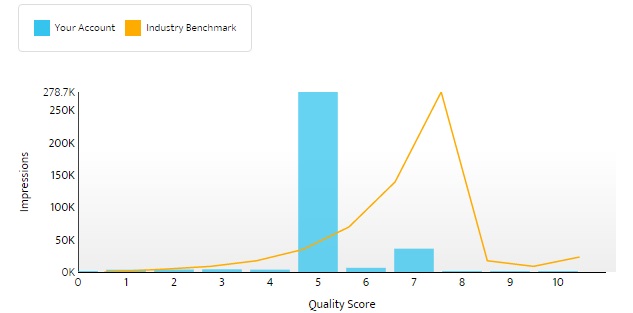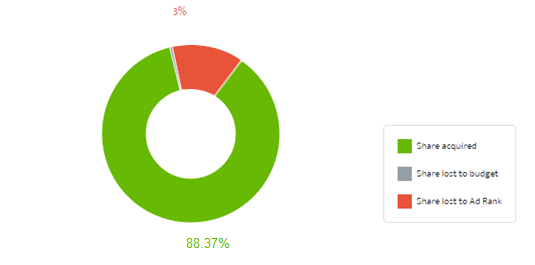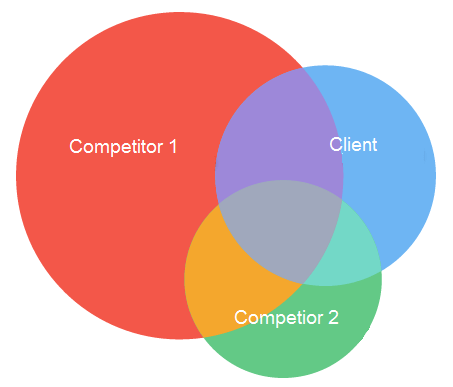Asher Elran

Google AdWords is a heavyweight when it comes to understanding and monitoring the desires and questions of Google searchers, and ultimately understanding what affects the overall decision making that drives clicks.
By digging through and analyzing data, one can find explanations for budget leakage, and reasoning for campaign renovation. Using AdWords, in combination with multiple tools, users can conduct an accurate analysis of a campaigns current performance, both to discover strengths to continue taking advantage of and areas to improve.
For those of you looking to discover new ways to analyze your campaigns and make large and small scale changes to your account, join us for this ultimate PPC account analysis.
Tools and Resources Used:
In order to perform an analysis this in depth, you will need to take advantage of some tools. Each of these offers new insights, and a better understanding of the market and competition that you’ll need to analyze. The tools below were used for the example client:
- Ignitur – help manage this process
- SpyFu – reports and analysis
- WordStream – reports and analysis
- Google Analytics – reports and analysis
- Google Keyword Planner – keyword analysis
- SEMrush – reports and analysis
- Keyword List generator – keyword analysis
- AdWords Wrapper – keyword analysis
Top 5 ICCS Recommendations
ICCS stands for Impressions, Clicks, Conversions, and Spend. The relation between the four categories yields important insights that a user can learn from, as well as take action on. The graph below shows the previous six months and the massive fluctuations between the four categories. Every graph will be different, but below are five main takeaways concluded by looking at this graph.
Analysis:
- Conversions go down while spend continues to rise. This is a sign of wrong targeting. The problem could be demographic and/or geographic.
- Clear improvement in CTR between April to July, but a significant drop occurred after July due to paused ad groups that had high CTR, and therefore increased the average. This is not to say that stopping high CTR ads from running is a mistake. But, if they are not necessary then replace them with other ads that will keep the CTR stable.
- Clicks and Spend have a nice and steady correlation, which suggests a steady CPC. That means that quality score is also steady. However, that also means that there was no effort to improve CPC OR it has reached its niche minimum.
- Impressions stay steady, while spend increases. That’s a clear indication of CTR improvement – the user will spend more on clicks, but have about the same amount of impressions.
- Around mid-August, clicks rose above spend, and significantly improved conversions.
How to improve:
- Improve ad CTR by opening a brand campaign. This will help increase the overall account level CTR.
- Improve CTR by: creating sub ad groups that contain enticing ads with commercial intent for the user.
- Improve quality score to decrease our CPC. With a lower CPC, spend will remain steady, while clicks increase.
- Control leakage and improve CTR by improving quality score and using negative keywords to control leakage.
- Improve conversions by refining commercial intent keywords, increase CTR, and improve landing page relevancy.
Quality score
Quality score is one of the most important factors for any PPC account. When an account has great quality scores, it’s clicks will cost less, it’s rankings will improve, and the entire account will see better ROI.
Keyword quality score is marked at 6 out of 10 when initiated. After a significant number of impressions, Google will display the quality score based on a campaign’s performance. Quality Score basically reveals how Google rates a campaign for the SERPs. Comparing with competitors will help to analyze a standard industry benchmark that should be aimed for.
Analysis:
- The account’s quality score average is 5/10 (picture below)
- Industry benchmark shows that most of the competitor’s quality scores range between 7/10 – 8/10 (yellow line)

- The example below shows quality scores ranging from 1/10 to 3/10 which is considered to be very low for AdWords campaigns.
How to improve:
- Split up ad groups based on specific keywords
- Discover more targeted keywords and pause poorly performing keywords
- Test different ad text and landing pages
- Open a dedicated landing page for the poorly performing ad group
- Aim for quality score of 4 and up
Location performance
Using the Location Report in AdWords, a user can see each of the targeted locations. They can also see the performance of each location, and take action based on it. AdWords allows for country, state, county, and city based targeting, so users can get pretty in depth here based on CTR.
Analysis:
- There are multiple locations with low CTR, and no use of bid adjustment
How to improve:
- Improve ad copy on low CTR locations
- Use bid adjustment unless CTR is 1% or higher
- Increase bid adjustment by +5% for high performing locations
- Decrease bid adjustment by -5% for low performing ads
Impression share
Impression share is the amount that ads are triggered by relevant search queries. If an account has a low average impression share, it can have a negative impact on the performance of the overall PPC campaigns. Basically, the less that users show in search, the less clicks, traffic, and conversions they’ll receive.
Analysis:
- Impression share is in great shape at a high 88.37% for search ads only – but there is always room for progress.
How to improve:
- Make sure budget caps are above market value for top performing campaigns
- Target best times to show ads
- Improve keyword-ad text relevancy to increase QS and therefore, impression shares
- Move from broad and phrase match, towards exact match keywords to target the most accurate search queries and improve impression shares
Day of the week
Using AdWords, a user can view the performance of their campaign based on the seven days of the week. Some days are more active than others depending on the niche of the account. Some days, active searches may increase, which in turn will improve impressions, and hopefully CTR. After discovering the best converting days, a user can establish which days are better to target.
Analysis:
- Based on the below “all time” summary, it appears as though Friday and Saturday receive low conversions
- Monday and Tuesday have the highest

- Currently, days like Monday and Tuesday either have 0 Bid adjustment, or -20%, which lowers impressions for key converting days.

How to improve:
- Use the Bid Adjustments in Google AdWords to lower bidding spend for keywords on days with lower CTR, and the opposite for days with higher CTR
- Increase bid adjustment by 10% on Monday and Tuesday
- Decrease bid adjustment by -10% on days like Wednesday or Saturday (very low conversions)
- Pause the campaign on a day altogether if the results are really poor
Hour of the day
Using Google AdWords, a user can see the performance of an account, based on the 24 hours of each day. When conversions decrease during specific hours of the day, ultimately, the Cost per Acquisition (CPA) will increase for the entire campaign. Users can, therefore, target specific hours of the day to improve performance, and avoid budget leakage.
Analysis:
- The Campaigns have best performed (conversions) between 8am-5pm over “all time.” Users are primarily searching during business hours, and therefore, should be targeted for these times.
How to improve:
- Increase bid adjustments by +10% on high converting hours (8-5)
- Decrease bid adjustment by -10% on lower converting hours (10pm-12am)
- Pause bid Adjustments during hours which show very poor conversions over all time
Search query report
Users can look at the search terms that their ads appeared for by opening the search query report. Some ads will perform better for specific keywords typed in by searchers. By reviewing this report, users can discover new keywords with high potential, and also weed out the irrelevant terms by placing them in the negative keywords list.
Analysis:
Digging for four types of keywords, over the course of 60 days. Below are the four categories into which these search terms fit, along with the cost of appearing for them.
- Commercial intent – $100,484.76
- Informational – $29,061.39
- Somewhat informational – $67,701.83
- Brand – $1,950
Example keyword cloud
How to improve:
- Continue analysis of the search queries to further reveal keywords to avoid (negative keywords list)
- Aim for more exact targeted keywords to reduce budget leakage for many keywords, by adjusting keyword bids, and defining keywords with modifiers like exact and phrase match.
- Transfer informational keywords with low conversions and replace them with commercial keywords. This process should be a slow one so as not to rock the boat and disrupt performing campaigns.
- Increase Bid adjustment of high CTR keyword + 10%
Keyword positions
Using Google Analytics for the analysis, open the keyword positions report. Here, you can view the visits (sessions) alongside the conversions that the user has received. Each keyword has performed in multiple positions in the SERPs. Once the user can see a specific position in which the keyword performs well, they can adjust the bid to ensure the keyword achieves that position more often.
Analysis:
- There are multiple keywords with low position
- Generally keywords in the top three positions achieve the best conversion rates
How to improve:
- to rank against competitors with the same term, and increase keyword/ad position in the SERPs
- Aim for the top three positions in SERPs
Keyword market research
The relationship between the keyword groups of main competitors reveals new opportunities and areas from where we can eliminate leakage. Finding keywords that only competitors share, or don’t share, provides the user with important insights for keywords.
Analysis:
- All keywords – 27,737
- All share keywords – 4,903
- Client’s exclusive keywords – 683
- Competitor share – 3,158

How to improve:
- All share keywords – Increase bid adjustment by +10%
- Client’s exclusive keywords – Review and reconsider if necessary
- Competitor 1 and 2 – Review for new opportunities
- Competitor share 1 and 2 – Consider adding new keywords
Click-through rate
If a user’s ads are not relevant to searchers queries, then CTR will be low for a campaign. Even if a campaign has high impression share, they will continually have low CTR if their ads are not relevant. Understanding CTR and the patterns that improve it will help a user’s campaign ads and make them more relevant for search queries.
How to improve:
- Refine Ad extension Copy
- Refine Sitelink Copy
- Improve keyword positioning
- Refine Ad copy
- Increase bid adjustment for Mobile targeting
Account activity
Any PPC account requires continual maintenance and optimization. If a user actively manages and optimizes an account, they are more likely to see better ROI from it. View this report in Google analytics to gain insights into time spent on an account.
How to improve:
- Spend 15-18 hours /week in the early stages for research and optimizing the account
- Conclude testing after 3 months
- Continue optimization at a rate of 15-18 hours / week (on-going, based on research findings)
Long-tail keyword optimization
Long tail keywords are the keywords that are made up of two and three words. They are keywords and phrases that are harder to discover and target, but are less competitive. Oftentimes, advertisers will focus on the competitive and costly one word keywords and neglect the longer ones. Discovering and targeting these LTK can produce strong conversions, for a cheaper cost to the user.
Analysis:
How to improve:
- Test less competitive keywords for higher conversions and lower cost
- Implement 2 and 3+ word keywords slowly so as not to interrupt the steady flowing campaigns
Ad Text optimization
Ad text is what searchers see in the SERPs. It’s the main factor that helps them decide whether they will click on an ad, or pass it by. Improving ad text can improve a campaign’s CTR, Quality score, and overall return. By comparing a user’s ad text with competitor’s text, they can evaluate the effectiveness of it.
Analysis:
- Ads Per group has serious headway against the industry benchmark
- Total Ads need optimization when compared to the industry standard
Total ads / Ads per group
How to improve:
- Split A/B test with only two or three ads at a time to compare
- Create smaller groups of keywords to improve performance
Ad extensions
Ad extensions allow ads to be optimized with extra business information. They are direct links to web pages, click-able phone numbers for mobile users, and business information underneath the ad, like address, store rating, etc. Ad extensions generally improve ad CTR, and are a worthwhile optimization for PPC account users.
Analysis:
- User has add extensions, but missing mobile extensions
How to improve:
- See mobile section below.
Landing page optimization
Strong ads alone are not enough to maximize an account ROI. Campaigns can benefit from having multiple landing pages, and mobile ready pages to optimize and maximize conversions. Effective landing pages can increase quality score for keywords, and improve conversions, because, when created right, they will be more targeted towards specific keyword(s).
Analysis:
How to improve:
- Add landing page and split a/b test without web form
- Use Heat Map testing
- Implement Copy revision
- Implement CTA placement and copy revision
Mobile advertising
With mobile searches already surpassing desktop searches in 2015, users can identify and leverage opportunities for improvement in mobile PPC ads. They can also identify things such as text ads optimized for mobile search, sitelinks, call extensions, location extensions, and other mobile paid search best practices.
Analysis:
- 0 of 80 ad groups have mobile text ads set up
- 0 of 10 campaigns have mobile Sitelink extension set up
- 0 of 10 campaigns have mobile call extension set up
How to improve:
- Create about 40 mobile text ads with mobile sitelinks and mobile call extension
Negative keywords
Negative keywords are words that you don’t want to show up for in searches. When adding terms as negative keywords, ads won’t show to people searching for those terms or visiting sites that contain those terms. Identifying them helps users to reach the most interested customers, reduce costs, and increase return on investment (ROI).
Analysis:
- User’s negative keywords list shows some irrelevant terms and informational words that cause leakage.
| Example of irrelevant | Example of informational |
| limit | Why |
| Tucson | When |
| yelp | Can I |
| How | |
| pill | What |
| Memes | Can you |
| Vegas | |
| Meaning | |
| Calculator | |
| video | |
| Information | |
| Data | |
| Database | |
| Public records | |
| court |
How to improve:
- Add negative keyword slowly
- Add commercial intent keywords slowly
Measuring success and reporting
To measure a campaigns success, use:
Action plan
Research and Planning – (7-10 Business Days)
- Competitive niche research
- Comprehensive keyword research and keyword grouping
- In-depth account overview
Transition Action Plan – (90 Days)
- Apply all suggestions above
- Review and revise landing pages and call-to-actions
- Review goals and conversion tracking
- Rebuild the list of negative keywords from 12 months of data
- Decrease the informational keywords by 25% per month (those which didn’t show conversion going back 90days)
- Increase commercial keywords by 10% per month
- Bid adjustment +10% for highly performing commercial keywords
- Mobile bid adjustment +10%
- Location bid adjustment +10%
On-Going PPC Management – (Ongoing)
- Review and optimize CTR (time of the day, day of the week, geo, site links, etc.)
- Ad copy optimization using split A/B testing
- Optimize landing pages to help increase relevancy and quality score
- Implement conversion tracking optimization
- Bid optimization
- CTR and quality score optimization
As time continues, an in-depth understanding of the PPC account will help to determine some of the large scale changes that you make. It will also ensure that the changes made to the account are intelligent, data based decisions that will improve the campaign by decreasing leakage, and increasing ROI.
About the Author
Asher Elran is a practical software engineer and a marketing specialist. CEO at Dynamic Search, founder of Web Ethics, as well as the co-founder of the software, Ignitur.
Find this article helpful?
This is just a small sample! Register to unlock our in-depth courses, hundreds of video courses, and a library of playbooks and articles to grow your startup fast. Let us Let us show you!
Submission confirms agreement to our Terms of Service and Privacy Policy.
Already a member? Login
No comments yet.
Start a Membership to join the discussion.
Already a member? Login

















